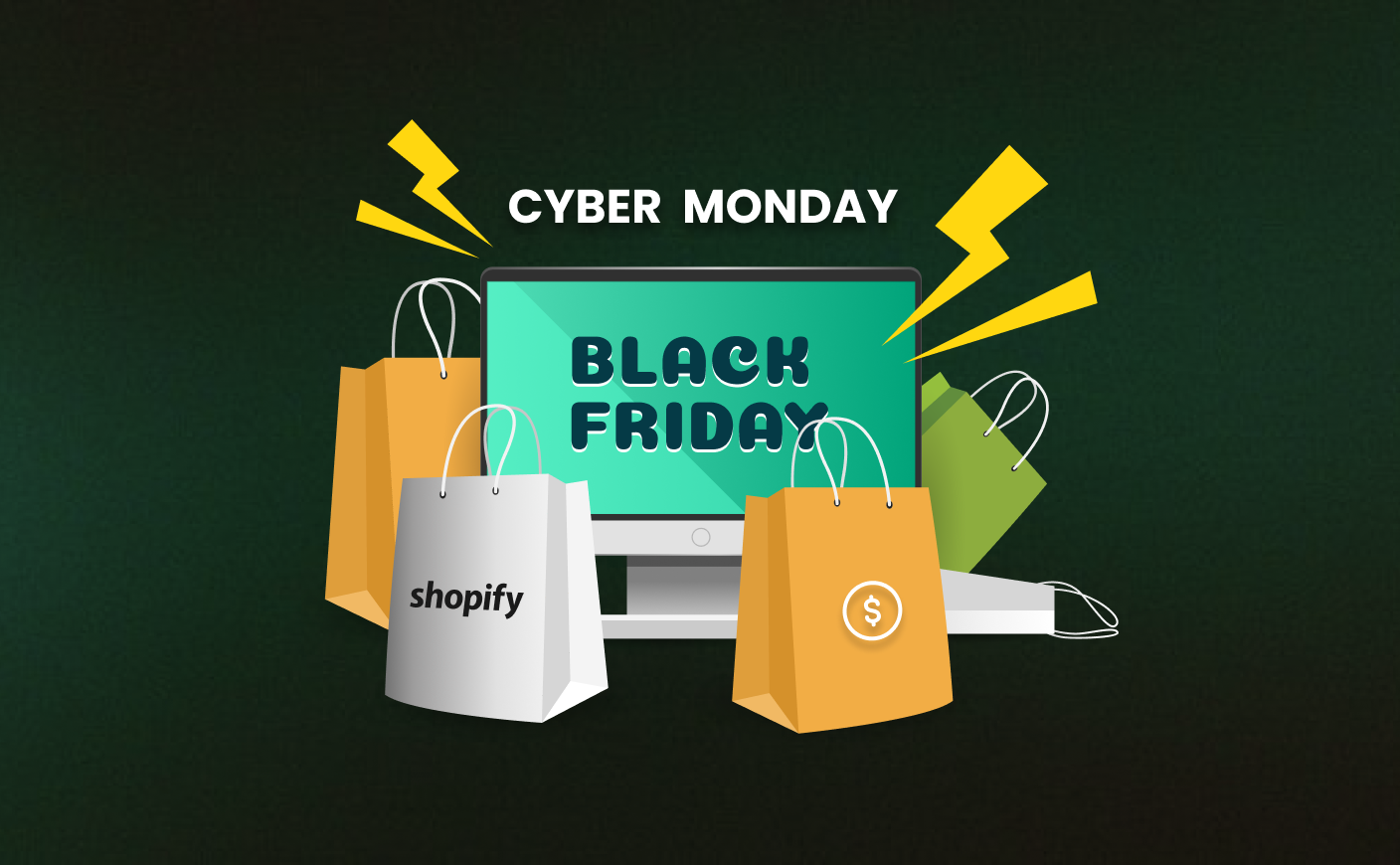10 Tips To Optimize Your Shopify Store With Social Commerce
e commerce
shopify store
social commerce

Social commerce, the fusion of social media and ecommerce, is the perfect way to approach your target customers in new and meaningful ways.
It provides an opportunity to improve interactions of your Shopify store in various social media platforms. By creating new shoppable experiences, your users can research, interact with, and buy products without leaving their favorite social apps.
5 Benefits of Using Social Commerce Strategy
Let us understand why it is essential to integrate social commerce into your Shopify store in recent times.
#1 Improving brand visibility
Social commerce allows your brand to appear directly in users' feeds. Your business gets organic exposure when consumers engage with your content by liking, sharing, or commenting.
You must remember that social media algorithms tend to prioritize content that generates engagement. It means that high-quality posts are likely to reach an even larger audience thus strengthening brand awareness.
#2 Better engagement and conversion rates
Social media platforms are perfect for interacting with your audience since they are made for engagement. You can directly communicate with customers and foster a feeling of community by using features like likes, comments, shares, and direct messages. This connection helps to build trust and loyalty, which can lead to higher conversion rates.
Customers are more inclined to complete transactions and even refer people to your company when they feel appreciated and involved.
#3 Customer experience
Social commerce makes buying easier by allowing users to explore, investigate, and buy products straight from social media platforms without having to navigate between apps or websites. Customers can finish transactions more quickly and easily as a result of the decreased friction in the purchasing process.
#4 Access to customer insights
Social media platforms offer detailed data about user preferences, behaviour, and engagement trends. You can find out more about your clients' hobbies, best-selling items, and even the kinds of content they like by examining this data.
By using this information, you can even guide your marketing team to create products and content that appeal to your target market.
#5 Increased social proof and trust
When customers see others interacting positively with your brand, it builds credibility and trust. Thus, by posting consumer testimonials on social media, you confirm the worth and legitimacy of your product.
Purchase decisions are significantly influenced by these social proofs, which includes influencer endorsements, user-generated material, and testimonies.
10 Tips To Leverage Social Commerce For Your Shopify Store
Now that we have understood the benefits, let us go through some of the points that you can use for your social commerce strategy.
#1 Choose the right social media platform
The first step in a successful social commerce strategy is to focus on the social media channels where your target audience is most active. You need to choose the platforms that are most appropriate for your audience rather than trying to be everywhere. For instance, with more than 60% of its users being female, Pinterest is a great option if your target audience is predominantly female. However, as younger consumers favour Instagram and TikTok, these platforms are probably better choices if you're targeting Gen Z.
Leverage tools like Google Analytics and Shopify’s reporting features to track which channels drive the most traffic, and focus on those.
#2 Create a social media persona
Creating a persona helps you understand your audience’s needs, interests, and buying behavior.
Start by gathering data through Shopify’s customer reports and social media insights to map out demographic and psychographic characteristics. This persona can help you create targeted advertisements and organic content that engages and resonates with your audience.
Sort data according to behavioural characteristics like preferred content, peak activity hours, as well as demographic characteristics like age, location, and gender.
Grouping data makes it simpler to customize communications and establish a rapport with your followers.
#3 Use social proof to build credibility
Social commerce depends on social proof, the psychological phenomena where people are swayed by the behaviour of others. You gain credibility by demonstrating that other people adore and recommend your products and services. Collaborate with brand ambassadors and influencers to highlight authentic experiences. Make customised hashtags to promote user-generated content and distribute client endorsements among your accounts.
For instance, by hosting a giveaway on Instagram, the Spanish fashion brand Alohas experienced excellent growth. Within two weeks, they gained 11,000 new followers by encouraging fans to tag Alohas in their stories and use a "Support small business" sticker.
#4 Optimizing content for each platform
Every platform has its own content guidelines and algorithms. Make sure your posts adhere to these rules: use vertical images, short and engaging captions, and concise, mobile-friendly video content (ideally around 15 seconds). Your descriptions should have clear calls-to-action (CTAs) urging readers to like, comment, share, or make a direct purchase. Also don't forget to keep your aesthetics consistent.
A unified, aesthetically pleasing, and brand-consistent style can be achieved by using tools like Crello, which provides thousands of templates and editing choices.
#5 Be interactive in your content
Interactive content such as sliders, quizzes, and polls can significantly boost user engagement. Instagram stories are perfect for this kind of content since they let you make mini-games that entice followers to engage with your company. For example, make a quiz that helps customers in choosing the best product for their needs or a poll that asks them to choose between two products. This increases brand interaction and can drive purchase intent.
A fashion brand might, for instance, encourage followers to select their favourite of two popular jacket styles by posting them in their stories. This not only engages customers but also provides insight into customer preferences.
Also read our blog on how to increase traffic to your ecommerce store.
#6 Use social commerce features to improve shopping experience
Many social media platforms now include built-in commerce features like "Buy Now" buttons and product tagging. These features allow consumers to make purchases with minimal friction.
For instance, you can use Instagram's in-app checkout, Facebook's shop feature, or Pinterest's shoppable pins to reduce the number of steps required to complete the purchase. A reduced checkout flow helps to increase conversion rates by making the process simpler and faster.
#7 Respond to customer feedback
Customer feedback is extremely useful for improving both your products and your brand's online reputation. Monitor mentions of your business and products on social media, taking note of both favourable and negative feedback.
Social listening solutions like Mention can help you stay on top of what people are saying about your business in real time, allowing you to reply quickly to address problems or convey gratitude.
This proactive strategy not only promotes a great brand image, but it also allows you to gain vital insights into what your customers appreciate or would like to see improved.
#8 Benchmark your price against competitors
In social commerce, competitive pricing is critical. Check the prices of your competitors on a regular basis to make sure you are providing a fair bargain to your target market. This is especially crucial on platforms like Instagram and Facebook, where shoppers can easily compare multiple businesses.
When analysing your competitor's pricing, consider giving regular promotions or bundle deals to entice customers to make more purchases. However, focus on maintaining a balance between quality and pricing to avoid devaluing your brand.
#9 Run giveaways to increase engagement
Giveaways are an excellent method to draw attention, increase engagement, and build your following. Set basic requirements for entering the contest, such as following your profile, tagging friends, or sharing a post. In this way, each entry expands your brand's reach. Make sure to structure the giveaway in a way that encourages sharing and is consistent with your brand's values and audience.
For example, an eco-friendly beauty firm could run a promotion for a limited-edition product bundle, requesting that participants follow the brand, tag friends, and publish a post on their story. This method can help to increase visibility while highlighting brand values.
#10 Track performance by using analytics
Analyse your social commerce activities on a regular basis to determine whether strategies are effective. Shopify analytics, paired with solutions like Finteza, can help you track data like traffic sources, conversion rates, and user behaviour on your website.
With this information, you can improve your social commerce strategy, optimise your postings, and increase client interaction. Understanding which posts and items generate the most traffic and purchases allows you to maximise the effect of your social commerce efforts.
TIP - Read our comprehensive guide on Shopify app store in 2024.
Final Thoughts
By using these social commerce strategies, Shopify store owners can leverage the power of social media to reach a larger audience and communicate with customers more effectively. From content optimization to better understanding your target, each step improves the shopping experience for customers. The goal is to remain adaptive, monitor performance measures, and constantly improve your strategy based on data and client feedback.
CrawlApps
At CrawlApps, we don’t just build Shopify stores—we create experiences that sell. We’re a bunch of problem-solvers who love turning ideas into stores that actually converts. Whether it’s fixing what’s broken or building something from scratch, we make sure every detail works in your favor. No fluff, no jargon—just real solutions that help your business grow. If you’re serious about Shopify, you’ll feel right at home with us.















